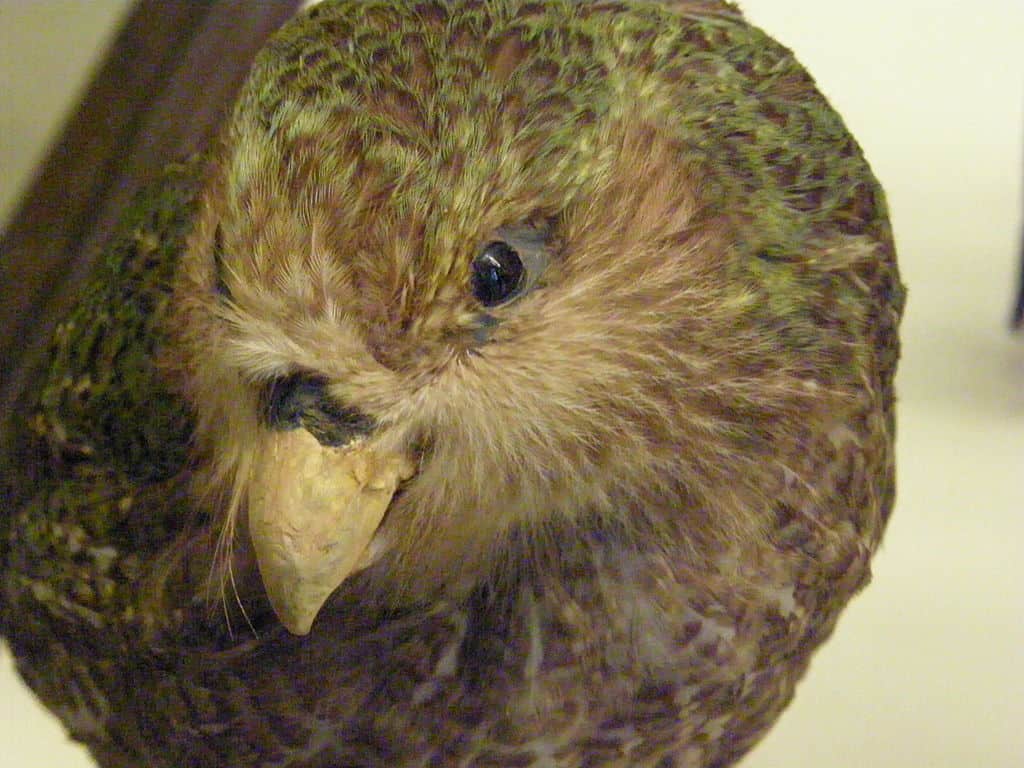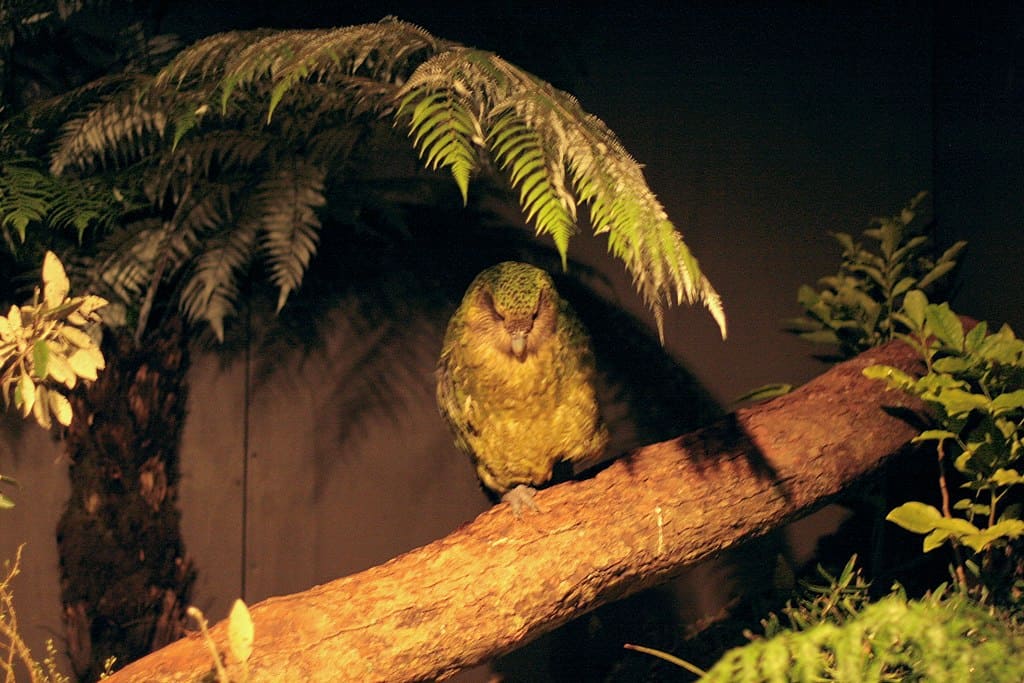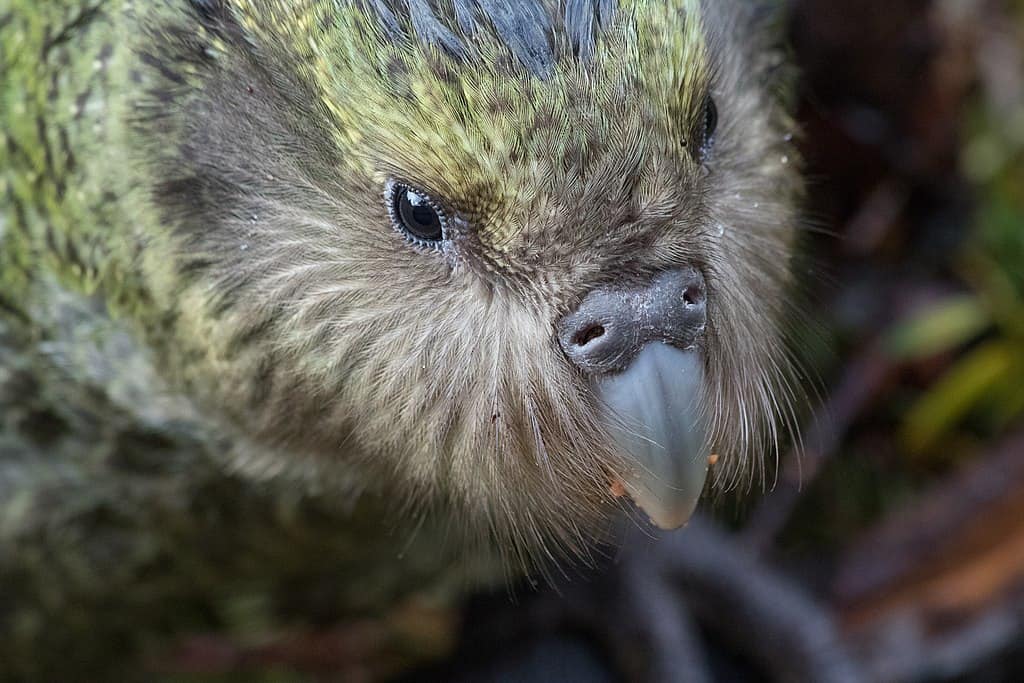Deep within the lush and rugged landscapes of New Zealand, an avian wonder draws the attention of scientists and wildlife enthusiasts alike. The kakapo parrot, specifically the Strigops habroptilus, boasts one of the most distinctive calls in the avian world. Known for its thunderous booming sounds, this nocturnal parrot is not just another feathered creature. It is an enigma in the realm of birds, a living testament to evolution’s creativity and, sadly, nature’s fragility.
A Parrot Unlike Any Other

The kakapo parrot is not your typical parrot; it defies conventional expectations. First, it is the world’s only flightless parrot. Weighing up to 4 kilograms (about 8.8 pounds), kakapos are also the heaviest of their kind. Their olive-green, moss-like plumage offers the perfect camouflage amidst dense vegetation, protecting them from the now-extinct eagles that once roamed New Zealand’s skies.
What sets the kakapo apart is not just its physical traits but its unmistakable call. These birds produce a deep, resonant booming sound that can reverberate up to 5 kilometers (over 3 miles) through the forested environment. This unique vocalization is a mating call from the males, designed to attract females by showcasing strength and fitness. For a bird that lives on a scarce diet of native plants, seeds, and fruits, these calls are an impressive feat in energy expenditure.
The Acoustics of Survival

The kakapo’s booming call is not just about finding a mate; it is a critical survival tool. During mating season, which occurs every few years when food is plentiful, male kakapos gather on traditional display arenas known as leks. From there, they inflate thoracic air sacs that allow them to emit low-frequency booms, creating an acoustic spectacle that is hard to contest. The low pitch of the calls helps them travel long distances, slicing through the dense forest canopy to reach receptive females scattered across the island.
This remarkable adaptation, however, comes with risks. The same calls that attract potential mates also alert predators. Coupled with their ground-dwelling nature and nocturnal habits, kakapos are historically vulnerable, especially to introduced species such as cats and stoats.
Conservation Efforts A Race Against Time

The plight of the kakapo is severe. Once widespread across New Zealand, their numbers dwindled drastically due to predators and habitat destruction, leaving them teetering on the brink of extinction. Intensive conservation efforts commenced in the late 20th century, centered on relocating the remaining population to predator-free islands.
These conservation initiatives have borne fruit with a steadily increasing population, thanks to intensive human intervention, including monitoring, supplementary feeding, and even innovative techniques like artificial insemination. Yet, the challenges persist. As of now, there are only about 200 kakapos in existence, each one meticulously cataloged and cared for by dedicated conservation teams.
The Role of Technology in Kakapo Conservation

Modern technology plays a pivotal role in kakapo conservation. From genetic studies to prevent inbreeding to drones for habitat monitoring, technology provides tools that are helping save these unique parrots. Researchers are deploying infrared cameras and radio transmitters to track kakapo movements and behaviors, offering insights that traditional methods might miss.
One particularly intriguing technology is the kakapo ‘smart eggs,’ which are artificial eggs equipped with sensors. These are placed in nests to monitor temperature, humidity, and other variables, ensuring optimal hatching conditions for fostered eggs.
The Soundtrack of Hope

While the booming call of the kakapo is a marvel of nature, it is also a poignant reminder of the fragile balance that exists between species survival and extinction. These resonant calls are no longer solely a romantic serenade between parrots but a clarion call to humanity, urging us to protect what remains of our planet’s precious biodiversity.
By understanding and protecting the kakapo, we not only preserve an evolutionary wonder but also send ripples of hope through the conservation domain. Each boom echoes nature’s resilience, and with every concerted conservation effort, the kakapo’s soundtrack becomes a symphony of optimism for endangered species worldwide.
- The Secretary Bird A Raptor That Hunts on Foot - August 9, 2025
- 10 Dog Breed Restrictions That Stir Controversy in U.S. States - August 9, 2025
- 13 Animals That Outsmart Their Predators - August 9, 2025

